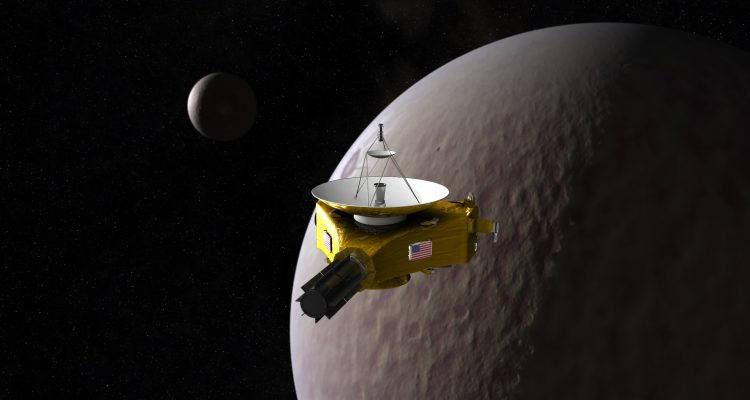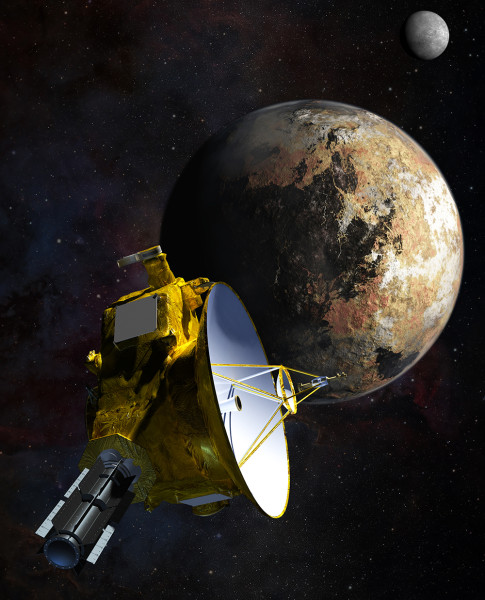Do you know what a planet is?
Most of us can tell the difference between a planet and a star and the difference between a planet and an asteroid or comet. Astronomers, like everyone else, like to group/classify similar objects into categories. Ask almost any school kids what a planet is, and they will give you examples. Ten years ago (2005) the planetary examples would have been; Mercury, Venus, Earth, Mars, Jupiter, Saturn, Uranus, Neptune, and Pluto. To keep the planets in the Solar System organized, many people used a memory trick to remember the order of the planets. This used the first letters of each planet to match the first letters of the phrase – “My Very Excellent Mother Just Served Us Nine Pizzas”.
At the present time (2015) the phrase has changed to – “My Very Excellent Mother Just Served Us Nachos.” But wait!!! What happened to the Pizza? Where is Pluto? No one today has a problem with the other eight planets remaining planets. What has happened to make Pluto suddenly different?
The story of Pluto started over 85 years ago. Pluto was discovered pretty much by accident in 1930 by the young American astronomer Clyde Tombaugh. When Pluto was first looked for and then found, it was thought to be an as yet undiscovered planet bigger and more massive than the Earth. Because of a math error in a time before computers, astronomers started searching for this big object thought to be pulling on the then outer planet Neptune. Over time this math error was found, and better observations revealed that Pluto was not the big planet as predicted. Pluto was much smaller than expected, only two-thirds the size of Earth’s Moon and slightly more than one-sixth the mass. Pluto actually stayed the same size and mass during this time, but our perspective of Pluto kept changing with newer and better observations.
Some astronomers started to wonder if Pluto should be reclassified as something other than a planet as it did not fit into the pattern of small rocky worlds close to the Sun and huge gas worlds further out. On August 24, 2006, an elite club of professional astronomers all with PhD degrees voted at a meeting of the International Astronomical Union (IAU) to demote Pluto from its classification as a “planet” to a new category of smaller astronomical objects with the name “Dwarf Planet.” Not everyone agreed with this new Planetary definition. Some astronomers, scientists, and citizen scientists find the IAUs three-part “planet” definition to be an example of sloppy bad science created by a rushed and tired committee at the very end of a long conference — making hasty compromises so that the members could get to the airport on time to go home. To this day there is still much debate on this IAU definition and what is or is not a Planet.
Here is the three part-definition from the Aug. 24, 2006, International Astronomical Union (IAU) Resolution 5A-Def. of “planet”. A planet is a celestial body that:
(a) is in orbit around the Sun;
(b) has sufficient mass for its self-gravity to overcome rigid body forces, so it assumes a hydrostatic equilibrium (nearly round) shape; and
(c) has cleared the neighborhood around its orbit.
Let’s leave it to the reader to find the numerous “problems” inherent in each of the three parts of this planetary definition. The author will outline these in detail in Part III of this series of Pluto-related articles.
On Jan. 19, 2006, NASA launched the New Horizons spacecraft mission to Pluto to study the unexplored furthest planet, its surface features, five known moons, and atmosphere. This launch took place about eight months before the above IAU vote. The New Horizons spacecraft will arrive and fly through the Pluto system in a few days this summer on July 14, 2015.
Here are five planet-related topics for discussion with your family and friends:
1) What characteristics do you think a body in space needs to possess to be called a Planet?
2) Do planets need to orbit the Sun? Or any Star?
3) What about the nearly 1,950 planet-sized objects (exoplanets or extrasolar planets) found orbiting other stars? Should these be called planets? Why or why not?
4) If the Earth’s Moon were orbiting the Sun and not the Earth, it would most likely be called a planet because of its size. How small can an object be and still be called a planet?
5) What if a planet-sized body – say Neptune — were thrown away from the Sun and out of the Solar System and floating in the space between the stars. Is it still a Planet? Why or why not?
The SMART-Center staff and the BluePrint Working Group think it was easy to demote Pluto to a Dwarf Planet when even through the most powerful telescopes Pluto was just a fuzzy smudge and its moons were but tiny blurs. However, when the New Horizons spacecraft makes its flyby of the Pluto system in mid July 2015 and high definition images and data start to trickle back from the Pluto system, the world’s astronomers and citizen scientists (any kid or adult interested in science) will have to reevaluate Pluto’s planetary status and revisit what it takes to be a planet. We anticipate that in Mid-July the images and additional discoveries of Pluto and its system of moons will ignite a new appreciation of Pluto as a unique world with its own exceptional set of characteristics creating a groundswell of citizen scientists supporting a reinstatement of Pluto as a planet.
What do you think?
To see some of the planets in the Solar System in close-up detail through a telescope or to ask your astronomy questions in person, come to one of our free, public StarWatches. For StarWatch times and places, check out our calendar of events on our webpage at www.smartcentremarket.com or in each issue of Ohio Valley Parent Magazine.
For interested 4th through 8th grade students we will be hosting a one-time Summer Science Camp, “Planet Pluto Camp,” at the SMART Centre Market July 13th and 14th, 2015. Call 1-304-233-4667 for more information.
In celebration of the New Horizons spacecraft’s arrival and fly through of the Pluto system on July 14, 2015, the SMART Centre Market will host the free Planet Pluto Public Party and StarWatch from 6 p.m. to 9 p.m. on July 14. Call 1-304-233-4667 for more information.
Additionally, visit the website http://pluto.jhuapl.edu/ for updates, new Pluto images and data, and to watch the Pluto Flyby Countdown Clock.

Robert E. Strong lives in Wheeling, W.Va., with his wife of 20 years, Libby. They co-own the SMART Centre Market – the interactive science store in Wheeling’s historic Centre Market district. Additionally, they run the SMART-Center a 501(c)(3) non-profit informal science center and programming that has served the area since 1994.
Robert is an avid amateur astronomer who works with the ASTROLABE Astronomy Club, Near Earth Object Foundation, and SMART-Center to bring over 40 public annual StarWatch events to the area. Robert heads up the SMART-Center’s BluePrint Working Group to create a better public understanding of our Universe and develop an improved 21st century nomenclature set for celestial objects in the Solar System and closest star systems.



